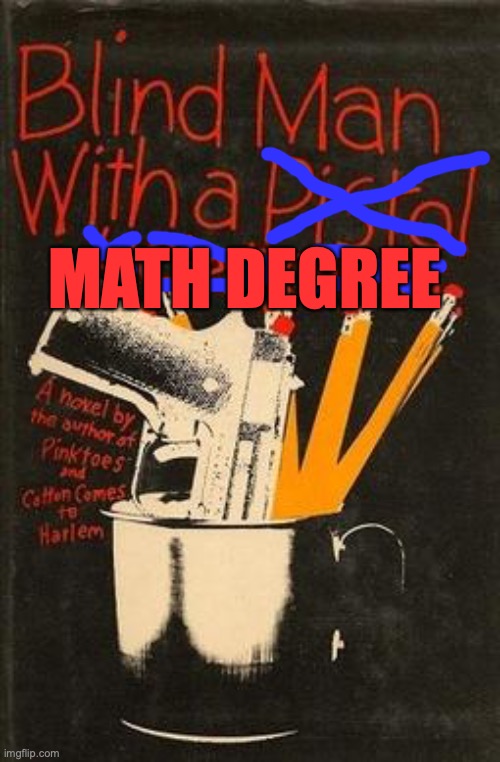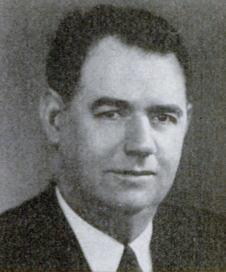This blogpost is preceded by
The start of the 1956-57 academic year was the start of Horace B. Davis's second year at Benedict College. Horace hadn't been particularly happy working at Benedict, but his first year here had passed uneventfully. This was no small thing. His experience at the University of Kansas City had demonstrated that his involvement with Communism made him a target for politicians.
Politicians in South Carolina were especially interested in rooting out Communists like Horace. A central goal for politicians in 1950s South Carolina was the preservation of segregationist. Challenges by the nascent civil rights movement were alleged to be the result of "agitation" by Communist workers from out-of-state. As a Communist from the northeast who was working at an HBCU, Horace was a near perfect realization of their political fears. However, initially no one seems to have noticed his presence.
Horace's situation changed rapidly and dramatically in March 1957. That month Charles E. Whittaker, the Missouri judge that had ruled against Horace's reinstatement at KCU, reappeared on the national landscape. On March 2, President Eisenhower nominated Whittaker to a seat on the U.S. Supreme Court. Two days later (on March 4), the Senate Judiciary Committee approved of the nomination. The Committee Chair reported that the motion to approve had passed unanimously and without debate or any unfriendly comment. A committee hearing on the nomination was set for March 17.
 |
Charles E. Whittaker (on the left) at the White House shortly after being nominated to the Supreme Court
The State, March 3, 1957. pg. 1. |
Whittaker seems to have been viewed by many as noncontroversial and apolitical. In an article discussing the nomination, The State quoted Whittaker as responding to a question about his political views by saying "I read the law only for understanding of its meaning, and apply and enforce it in accordance with my understanding of its meaning." A March 6 editorial in The State titled "Has Right Idea" approved of Whittaker's judicial philosophy and endorsed his nomination. Whittaker, the editor said, espoused "a doctrine sorely needed by the present highest court."
Not everyone supported Whittaker's nomination. Horace was strongly opposed. He wrote a letter expressing his views to the Senate. His letter, which was quoted in part by The State newspaper, read
I was fired by the University of Kansas City for refusing to answer Sen. Jenner's (R-Ind) questions about Communism, when put by the trustees of the university (after Sen. Jenner had haled [rec hauled] me before him) in the year 1953.
He went on to explain that he had filed a lawsuit, but Whittaker had dismissed it and denied him a rehearing. Horace explained that
[Whittaker] said among other things that the public will not and should not stand for having teachers in the public schools, men who will not answer questions about Communism. This statement measures not only his judicial temperament but his attention to facts. A private school is not a public school.
I feel that Judge Whittaker's brief record on the bench should be scrutinized with care. I feel further that whatever such examination discloses, the Senate should resound with the voice of someone who is concerned with civil liberties – for a change.
He went on to discuss the recent appointment of William J. Brennan Jr. to the Supreme Court. Brennan had been attacked by Senator Joseph McCarthy, a staunch anti-Communist, because McCarthy viewed him as insufficiently anti-Communist. Horace said the questioning of Brennan
featured questions as to whether he was likely to be sufficiently severe on Communism. This is a sad commentary on the state of our liberties.
Horace sent his letter to Richard L. Neuberger, a Democratic senator from Oregon. It is unclear why Horace contacted Neuberger specifically. Horace had no ties to Oregon, and Neuberger was not on the Judiciary Committee. Neuberger had a reputation for strongly supporting liberal causes, so Horace may have thought he would be supportive of Horace's opposition.
Neuberger passed Horace's letter on to Thomas C. Hennings Jr, a Missouri senator who sat on the Judiciary Committee. In turn, Senator Hennings shared the letter with the rest of the committee.
Horace's former lawyer Fyke Farmer also opposed Whittaker's nomination. Fyke submitted his own letter and then traveled to Washington D.C. to participate in the hearing. Horace helped fund Fyke's trip, giving $50 for travel expenses.
Except for Missouri's two senator who made brief statements in support of Whittaker, Fyke was the only person to appear at the committee hearing.
At the hearing, Fyke did not find a receptive audience . The Committee Chair was Mississippi Senator James Eastland. Just one year ago Horace had seen Eastland speak at a rally in support of segregation. In fact, Eastland wasn't the only rally speaker at the hearing. Also present was South Carolina Senator Olin D. Johnston.
Both Eastland and Johnston had also been on the Internal Security Subcommittee when it subpoenaed Horace. In fact, almost half of the senators from that subcommittee were at Whittaker's hearing. Also present were former subcommittee members John Marshall Butler and Arthur V. Watkins. None of them had been present for Horace's testimony (Jenner was the only senator who had been present), but their presence on the committee was indicative of their attitude towards communism.
Fyke's testimony went off the rails almost immediately. Fyke was first asked to provide basic biographical information like what he did for a living. When Fyke said that he was working for world government, senators began questioning him about his political activities. For example, Eastland asked if he'd been the author of a letter protesting the Smith Act that was published in the Daily Worker, the official newspaper of the Communist Party USA.
After answering preliminary questions of this nature, Fyke was able to deliver a prepared statement. In it, he provided a basic narrative account of Horace's experience with KCU and Whittaker's decision to dismiss his lawsuit. He then strongly criticized Whittaker, saying that his decision "lent judicial sanction to the rule" that "all members of the academic community must stand up and be counted or be fired." Whittaker's legal opinion, said Fyke, was "the most fell judicial blow that has been struck on this continent against human liberty." He went on to rhetorically ask how Whittaker's view of the fifth amendment rights of school teachers compared with his view of those rights for "gangsters, gamblers,... and persons charged with crimes involving fraud and violence."
Fyke's prepared statement seems to have done little except offend the senators. Senator Hennings seemed especially offended by Fyke's remarks about "gangsters" and "gamblers." He repeatedly asked Fyke to explain what he was saying. At one point, Hennings said "[I]n undertaking to illustrate your point, you suggest that gangsters, gamblers, and others who are beyond the law, criminals are in some way or another treated more benignly and more tolerantly by the justice-designate [i.e. Whittaker] than others." When Fyke denied meaning this, Hennings asked in exasperation, "Then why did you mention it?"
The senators asked some questions about Fyke's statement, but they spent most of the hearing asking him about his political activities. For example, Eastland pulled out a pamphlet published by the "Young Communist League." The pamphlet, Eastland explained, contained two articles: a defense of Stalin and another one titled "Is Sir John Pratt right?" Eastland asked Fyke to confirm that he'd written the second one.
Senator Watkins posed the question made famous by HUAC: "Have you ever been a Communist?" After the question was rephrased several times, Fyke denied being a member of the Communist Party USA but acknowledged being in sympathy with international communism.
Fyke's testimony was followed by a statement by Judge Whittaker. The senators used the opportunity to question Whittaker as a chance to mock Fyke's objections and criticize his character. For example, upon learning that Whittaker had graduated from the University of Kansas City, Senator Hennings, with tongue-in-cheek, asked, "You were not admitted, Judge, I take it, by the spirit of devotion to the dear old alma mater in your decision?" Not realizing this was a joke, Whittaker began to respond seriously, but he was interrupted by Hennings who explained "I am being facetious."
After being asked a more serious question about Horace's lawsuit, Whittaker volunteered that he'd also decided on a second lawsuit filed by Fyke. The second was a personal lawsuit for the right to refuse full payment of federal taxes on the grounds that the funds illegally used to fund the Korean War (which Fyke felt was waged unlawfully). Upon hearing this, Hennings exclaimed in exasperation: "A graduate of Yale Law School?"
The futility Fyke's effort is demonstrated by the last question that Whittaker was asked: Senator Watkins asked him if a rode pony to school. Whittaker explained that he'd ridden the pony 6 miles each way, and Watkins said that he'd done the same "through mud and dirt." Whittaker was confirmed by the Senate two days later.





















